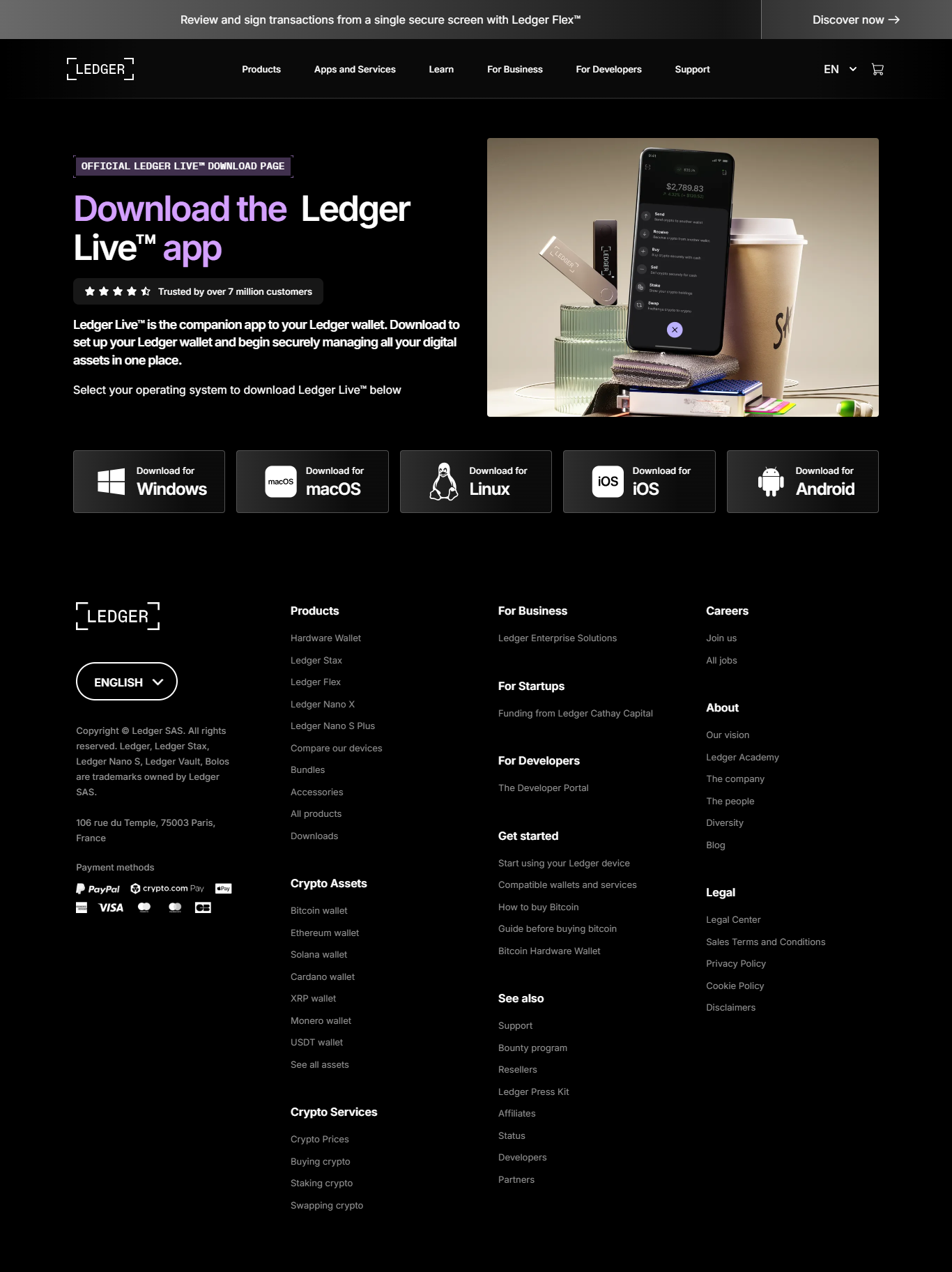Ledger® Login | Getting started™ with Ledger®
Welcome to the official guide for Ledger® Login and getting started with your Ledger® hardware wallet. This comprehensive article will walk you through everything you need to know about setting up, securing, and using your Ledger device to manage your cryptocurrency safely. Whether you are a beginner who just purchased a Ledger Nano X or Nano S Plus, or an experienced crypto holder looking to maximize security, this resource covers all the essentials.

Why Ledger® is Trusted Worldwide
Ledger hardware wallets are among the most trusted tools in the cryptocurrency ecosystem. By keeping your private keys offline and secured within a hardware device, you eliminate the risks associated with online hacking, phishing attempts, and malware attacks. Ledger ensures that your crypto assets remain safe even if your computer or smartphone is compromised. Millions of users worldwide rely on Ledger for storing Bitcoin, Ethereum, and thousands of other tokens securely.
Getting Started™ with Ledger®
To begin, unbox your Ledger Nano device and ensure that it is purchased from the official Ledger store or authorized resellers. This is critical to avoid tampered devices. Inside the package, you will find the Ledger device, a USB cable, instruction guides, and a recovery sheet. The recovery sheet is one of the most important components of your wallet setup.
Step 1: Download Ledger Live
Ledger Live is the official desktop and mobile application that allows you to manage your Ledger device, install apps for different blockchains, and monitor your portfolio. Visit the official Ledger website (ledger.com/start) and download Ledger Live for your operating system. After installation, launch the app and connect your device via USB or Bluetooth (for Nano X).
Step 2: Initialize Your Ledger Device
When you power on your Ledger wallet for the first time, it will prompt you to create a new wallet or restore an existing one. Select “Set up as new device” if this is your first Ledger. You will then create a secure PIN code of 4–8 digits. This PIN is required each time you use your Ledger.
Step 3: Write Down Your Recovery Phrase
The device will display a unique 24-word recovery phrase. Carefully write this down on the recovery sheet provided. Never take a photo, store it digitally, or share it online. This recovery phrase is your only backup to restore your wallet if the device is lost or damaged.
Step 4: Install Ledger Apps via Ledger Live
After setting up your PIN and recovery phrase, open Ledger Live. From here, install apps for the blockchains you want to use (Bitcoin, Ethereum, Solana, etc.). Each blockchain has its dedicated app, which allows you to send, receive, and manage coins securely.
Step 5: Secure Your Ledger
Enable additional security features such as passphrase protection, set strong passwords for Ledger Live, and always keep your firmware updated. Ledger frequently releases updates to patch vulnerabilities and enhance performance.
Logging into Ledger®
Unlike centralized exchanges, Ledger does not use a standard username-password login system. Instead, your PIN code and hardware device act as the authentication method. When you open Ledger Live, simply connect your device and enter the PIN to unlock access. For advanced users, pairing with third-party wallets like MetaMask is also possible, allowing you to interact with decentralized applications (dApps) while keeping your private keys offline.
Best Practices for Ledger® Users
- Always buy Ledger devices from the official store or trusted resellers.
- Never share your 24-word recovery phrase with anyone.
- Regularly update Ledger Live and device firmware.
- Enable password lock for Ledger Live on your computer or smartphone.
- Be cautious of phishing emails, fake Ledger apps, and fraudulent websites.
Common Issues and Troubleshooting
Users occasionally face issues such as device not connecting, PIN entry problems, or app installation errors. These are usually resolved by updating firmware, reinstalling Ledger Live, or using a different USB cable/port. Ledger’s support team and official knowledge base provide detailed solutions for these scenarios.
Conclusion
Getting started with Ledger® Login is the first step towards securing your digital assets. By combining Ledger Live with your hardware wallet, you gain full control of your private keys while enjoying a user-friendly interface for portfolio management. With the right security practices, your Ledger device will serve as a long-term vault for your cryptocurrency holdings.
Remember, in the world of crypto, security is ownership. Your Ledger wallet ensures that you, and only you, remain in control of your digital wealth.